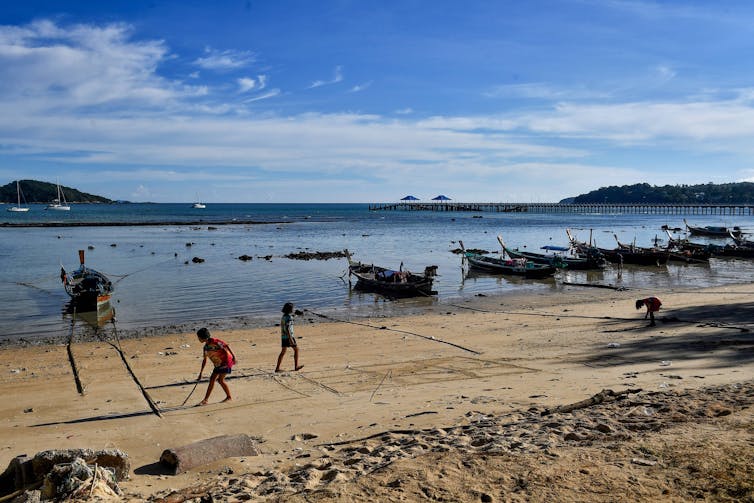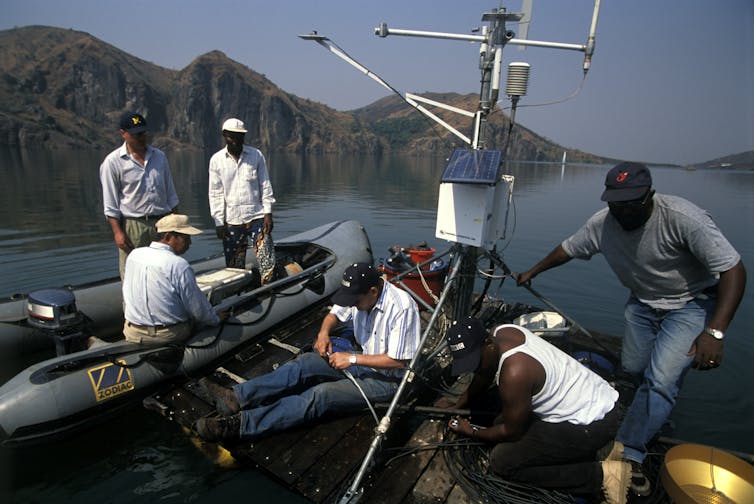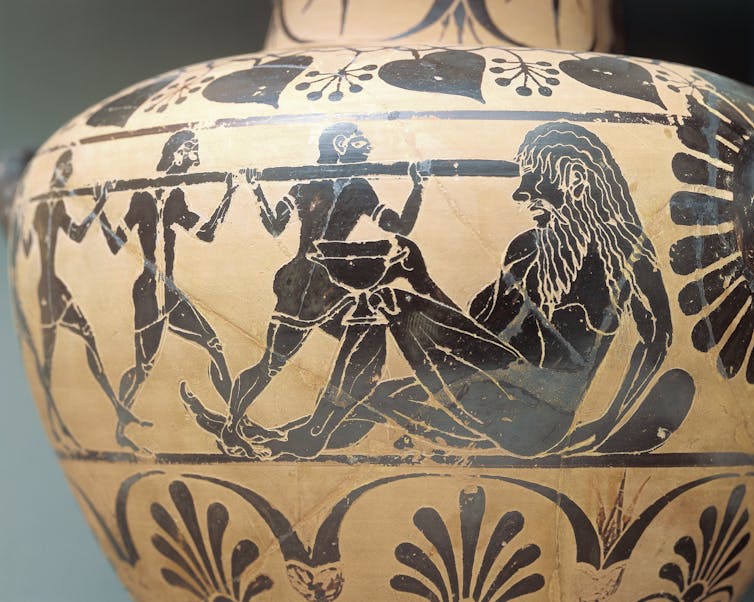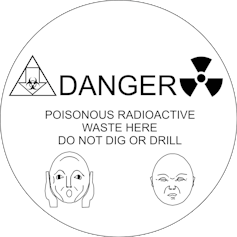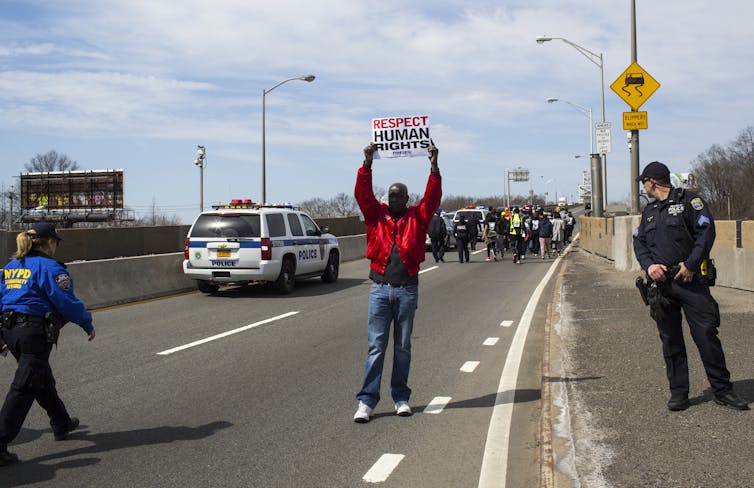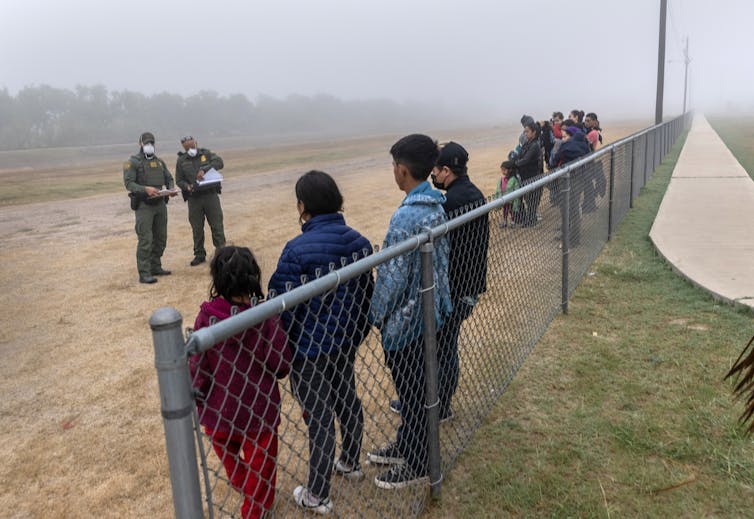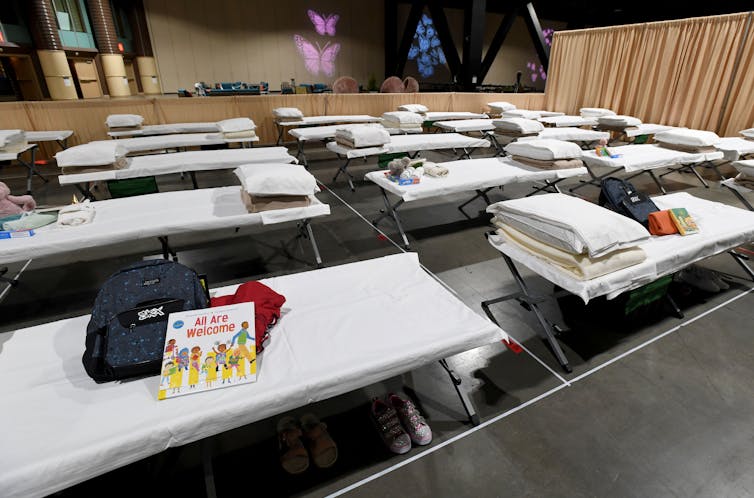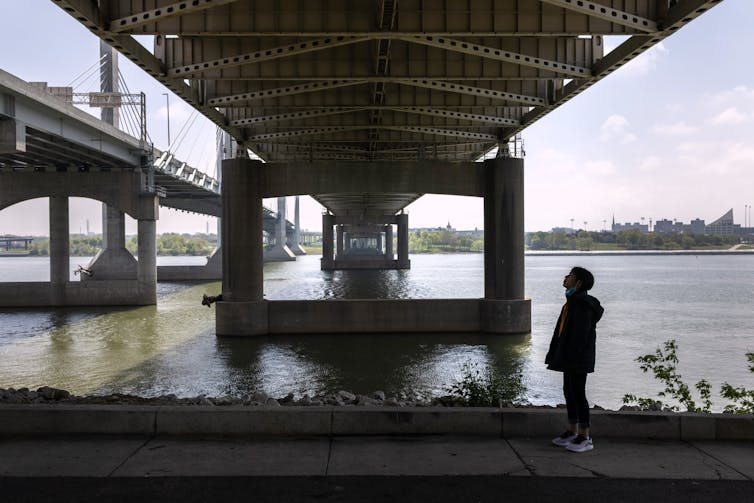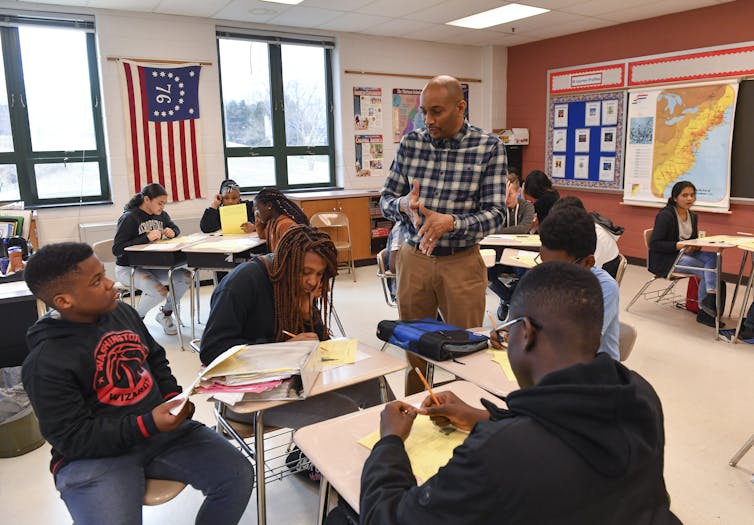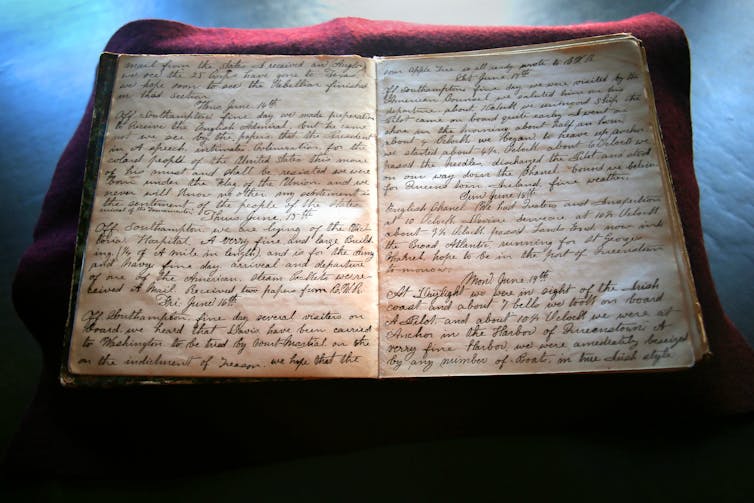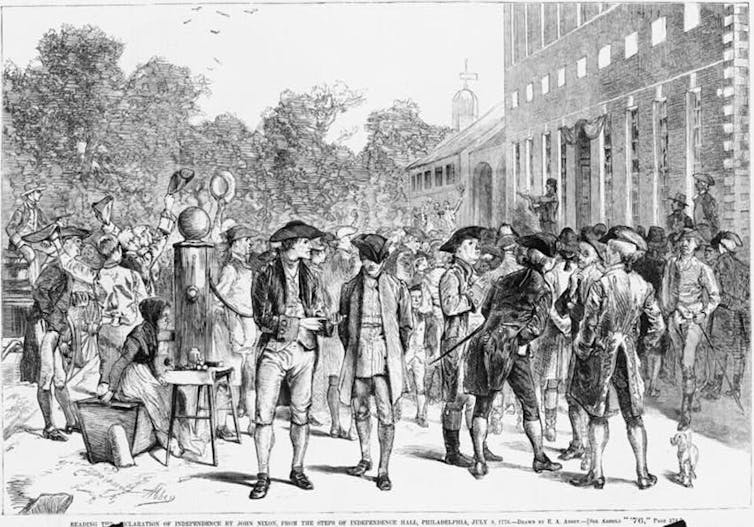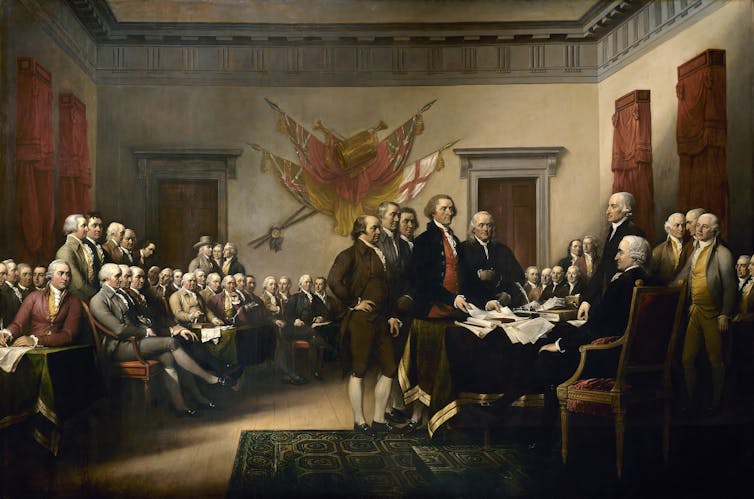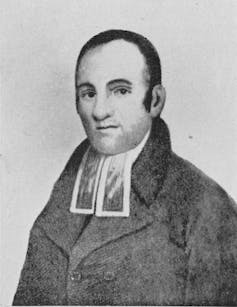Experts in autocracies have pointed out that it is, unfortunately, easy to slip into normalizing the tyrant, hence it is important to hang on to outrage. These incidents which seem to call for the efforts of the Greek Furies (Erinyes) to come and deal with them will, I hope, help with that. As a reminder, though no one really knows how many there were supposed to be, the three names we have are Alecto, Megaera, and Tisiphone. These roughly translate as “unceasing,” “grudging,” and “vengeful destruction.”
ProPublica is an independent, nonprofit newsroom that produces investigative journalism with moral force. We dig deep into important issues, shining a light on abuses of power and betrayals of public trust — and we stick with those issues as long as it takes to hold power to account. ProPublica’s mission is to expose abuses of power and betrayals of the public trust by government, business, and other institutions, using the moral force of investigative journalism to spur reform through the sustained spotlighting of wrongdoing.
This is a tough article in many ways, and it’s long And I doubt whether anyone who reads here lives in or nnear Philadelphia. But Philadelphia ia where Larry Krasner is the DA. And Larry is a member of Fair and Just Prosecution – a very early member, possibly a founding member but I don’t know that for sure. And Larry is up for re-election this year. He was primaried, and won that pretty easily. But now he faces the general. I don’t know what the odds are. But I do know that, even if it does get somewhat worse if he wins, it going to be a whole lot more worse if he loses.
Also, you may want a tissue before the end.
================================================================
by Alec MacGillis, photography by Hannah Price/Magnum Photos, special to ProPublica
Nakisha Billa’s son was still a baby when she decided to make their first flight to safety. It was early in 2000 and she and Domonic were living in the North Philadelphia neighborhood of Kensington, which had long suffered some of the highest crime rates in the city. Billa was 22, proud to be living in her own place after having been raised in West Philadelphia mostly by her grandparents, and flush with the novelty of motherhood. “When I found out I was carrying Dom, it was the best thing that had ever happened to me,” she said. She liked to kiss his feet, and he liked it, too, so much so that he would stick them out invitingly with a big smile on his face.
One unseasonably warm spring day, she walked with Dom to the store to get something to eat. As they were leaving, a fight broke out on the street, with gunfire all around. “I just froze,” she said. “There was nothing I could do but just stand there and hold my baby.”
By the time they got safely home, she had resolved to leave the neighborhood. She knew her grandparents would take them in, but she preferred to seek her own path, and so she packed up their belongings and sought assistance at a shelter. “I knew that if I didn’t do something for Domonic and me, we would always be dependent on someone,” she said.
While bouncing around a succession of subsidized apartments, Billa started working in medical billing. But she wasn’t happy with the child care center that Dom was in. So she jumped at the chance of a job where, she was told, she would be allowed to bring him with her: driving a school bus. She studied hard for her commercial driver’s license and passed. Every weekday, she would set off with him strapped in the front row of the bus.
In 2005, Billa made yet another move, to Northeast Philadelphia. That swath of the city, an arm extending far up Interstate 95, had a much lower rate of crime and violence than where she was living in North Philadelphia. She wanted a safe environment for her son.
As it happened, even her former neighborhoods in North Philadelphia would grow safer in the years following her move. The decline in violent crime in Philadelphia was not nearly as attention-getting as those in New York City and Los Angeles, but it was impressive in its own right. Between 1990 and 2007, Philadelphia averaged 382 homicides per year. Beginning in 2008 the numbers dropped steadily, and in 2013 and 2014, the city registered fewer than 250 killings each year. The decline coincided with a notable upgrade of the city’s prospects: the rejuvenation of Center City, the resumption of population growth. “I believe that there are some people probably still alive today because of many of the things we did back in those days,” said Michael Nutter, who served as mayor from 2008 to 2016.
As elsewhere, there was no clear consensus about what was behind the drop in violent crime. Criminologists offered up a string of possible explanations, among them the passing of the crack epidemic, the expansion of police forces in the 1990s, and the reduction of childhood lead exposure in house paint and gasoline.
The debate was largely academic, a friendly argument over a happy story. In recent years, however, the trend started to reverse in Philadelphia and much of the country — first gradually, and then last year sharply. The nationwide homicide rate jumped 25% in 2020, taking it back to where it was in the late 1990s, wiping out two decades’ worth of progress. The nationwide rate is still below its highs in the early 1990s, but many cities, including Philadelphia, are near or past their all-time highs. And in many cities, including Philadelphia, this year is on track to be even worse than last year.
This soaring toll, which is heavily concentrated in Black neighborhoods, has brought new urgency to understanding the problem. But the terrible experience of the past year and a half has also offered an opportunity to make sense of what drives gun violence, and how to deter it. The coronavirus pandemic, and the decisions that officials made in response to it, had the effect of undoing or freezing countless public and social services that are believed to have a preventative effect on violence. Removing them, almost simultaneously, created a sort of unintended stress test, revealing how essential they are to preserving social order.
The effect of this withdrawal was layered atop other contributing factors, such as criminal justice reforms in Philadelphia and other cities, and further deterioration of police-community relations in the wake of more high-profile deaths at police hands. Criminologists and city leaders across the country are now scrambling to disentangle these layers of causation as the spike carries on, turning a city such as Philadelphia into a sort of high-stakes laboratory.
Of course, for Philadelphians like Nakisha Billa, the city is not a laboratory. It is her home. The path the city has taken on public safety over the past two decades has been something palpable in her life, shaping it at every turn — and shattering it during the pandemic.
Caterina Roman is wary of easy sound bites. But if she had to explain why violent crime declined for years in Philadelphia, it would boil down to this: Police got better at their job, in large part because they started paying more attention to what worked and what didn’t.
Roman is a professor of criminal justice at Temple University in Philadelphia, but before that she worked as a senior researcher at the Urban Institute in Washington, D.C., where she evaluated that city’s implementation of a program called “focused deterrence.” It is modeled on criminologist David Kennedy’s work in Boston, Cincinnati and other cities, in which authorities focus outreach on the small groups of young men deemed most likely to engage in violent crime, inform them that they are watching them closely, and offer them help in seeking alternate directions. In that work, Roman got to know Washington’s then-police chief, Charles Ramsey, and discovered how open he was to outside expertise — not the most common trait in a police culture often characterized by parochialism.
In 2007, Philadelphia elected Nutter, a technocratic Black Democrat who put public safety at the heart of his campaign. “I talked about violence and talked about crime. And I talked about how it was ripping out the heart and soul of the city of Philadelphia,” he said in an interview for this article. “Too many people were dying in our city.”
He named Ramsey as his police commissioner, and together they embarked on a smorgasbord of approaches that had demonstrated success elsewhere. Ramsey ran a pilot program that placed new foot patrols in several dozen areas, with some of Roman’s Temple colleagues conducting an evaluation. In South Philadelphia, the city instituted its own version of focused deterrence. In several North Philadelphia neighborhoods, the city encouraged Temple’s implementation of a program called Cure Violence, based on the violence-interrupter model, in which residents, often with criminal backgrounds of their own, are trained to serve as monitors and mediators of neighborhood disputes. Every Monday, the police department would send Roman data on the previous week’s shootings in those neighborhoods. She would analyze it and share it with the Cure Violence outreach workers. “There was more innovation at that time,” Roman said. “And they implemented collaboratively.”
The department adopted another approach in those years, too: the stop-and-frisk tactic most closely associated with New York City. In 2009, the year after Nutter and Ramsey took charge, the number of pedestrian stops by police nearly doubled from where it had been in 2007, to more than 250,000. Nutter said the goal was straightforward. “What I wanted was a change in behavior by folks who might normally carry a gun,” he said. “It’s a very simple theory: You can’t shoot somebody if you don’t have your gun.” Nutter said he wanted habitual gun carriers to think, before they left the house, “I know they’re actively stopping people. Maybe I shouldn’t carry this gun today because I don’t want to get caught.”
This approach didn’t necessarily require steep sentences for being caught with an illegal gun. In the phrasing of the late criminologist Mark Kleiman, the key to deterrence was that punishment be swift and certain, not that it be severe.
But not everyone was persuaded by Nutter’s justification of stop-and-frisk. In 2010, a team of civil rights lawyers brought a lawsuit against the police department, alleging that officers were disproportionately stopping Black and Latino residents. A year later, the department agreed to a consent decree requiring that officers make stops only when they have reasonable suspicion that a suspect is armed, dangerous and engaged in criminal conduct, and that the stops not be based on race or ethnicity.
Even as the police became more restrained in their stops, the city’s homicide tally fell to levels not seen in decades. The decrease mirrored what was happening nationally. Notably, the national decline had continued through the Great Recession, confounding the notion that violent crime was driven by economic distress.
Roman remains convinced that the gains in Philadelphia were partly the result of the evidence-based approaches being taken, not least because she saw what happened in the years after those approaches fell away. In 2015, as Nutter’s term-limited tenure neared its end, the city elected Jim Kenney, a white Democratic city councilmember who cast himself in a progressive mold similar to New York’s new mayor, Bill de Blasio. Ramsey retired in early 2016 and Kenney, who was not nearly as drawn to the public safety issue as Nutter had been, replaced him with a deputy commissioner, Richard Ross Jr.
It was billed as a passing of the baton, but it became clear that Ross saw the department’s mission more narrowly, with less appetite for experimentation and academic input. Support for Cure Violence fell away. The focused-deterrence initiative foundered amid a lack of funding and collaboration among agencies and concerns about whether police were being careful enough in how they assembled their list of young men targeted for scrutiny. “There were a lot of issues with focused deterrence. Folks forget that they didn’t like it. It wasn’t as successful as they remember,” said Erica Atwood, senior director of the city government’s Office of Policy and Strategic Initiatives for Criminal Justice & Public Safety, who the city made available in response to questions submitted to the mayor’s office. “We didn’t do the model to fidelity; it got fucked up.”
But for Roman, the changes in approach after Nutter and Ramsey left were a reminder of something often overlooked in discussions of the rise and fall in city fortunes: Leaders, and their policies, matter. “These strategies were just phased out with new leadership there,” she said.
Billa flourished in her airy house in Northeast Philadelphia, where her household with her then-husband grew to include four more children, three of them adopted. She eventually opened a child care program that she ran alongside her school bus job. But she worried sometimes about what the move to a heavily white part of town had meant for Domonic. At the charter school he attended, he was often singled out for his race, both by teachers and fellow classmates. There were ugly remarks from classmates about his dark skin. During a discussion of city neighborhoods, a teacher put him on the spot, instructing him to tell the class how to get to the heavily Black-populated North Philadelphia.
At times, Billa wondered whether it had been a mistake to move to the safer part of town if it came at the cost of this sort of treatment. “It seemed like I traded one hazard for another,” she said.
It got to the point where she transferred Dom to a traditional public high school in 9th grade. Now, instead of taunting, he had to contend with metal detectors and what she said was inferior instruction. She transferred him yet again to an alternative high school, from which he graduated in 2018.
Billa and her then-husband, a detective assigned to the district attorney’s office, also made sure to prepare Dom for the risks that young Black men face in encounters with the police. When Domonic drove to his various part-time jobs — Wendy’s, Sears, a local factory that makes ice-cream toppings — Billa reminded him to keep his license and registration in the center console, so he wouldn’t have to reach for the glove compartment.
During this period, the city experienced another major shift in leadership. In early 2017, the city’s district attorney, Seth Williams, was indicted on federal corruption charges. (He later pleaded guilty to bribery and served almost three years in prison.)
Among those running to replace him was an unlikely contender: civil rights attorney Larry Krasner, who had made his name bringing countless cases against the police department. Krasner ran on a revolutionary platform, pledging to overhaul from within a local criminal justice system that had left Philadelphia with some of the highest incarceration rates in the country. “Justice makes you safer,” Krasner said in announcing his campaign. “How do we achieve that? Well, number one, we have to decarcerate. We have to get people out of jail.”
The local police union, Lodge #5 of the Fraternal Order of Police, rallied against its longtime nemesis, warning that Krasner’s reforms would lead to disorder. But the opposition was splintered among a large field of candidates, and Krasner tapped into the rising momentum nationwide for criminal justice reform that had been spurred by the protests over the deaths at police hands of Michael Brown, Eric Garner and others. Krasner won the Democratic primary in May 2017 with 38% of the vote and won again in that fall’s general election.
He fired 31 prosecutors in his first week in office, then set about fulfilling his campaign promises. Krasner’s office stopped pressing charges for marijuana possession, prostitution and shoplifting; stopped seeking bail for 25 low-level offenses; and slashed the rolls of people under parole and probation supervision.
Prior to Krasner’s election, homicides had been rising steadily since their 2013 and 2014 lows, and they continued to rise after it, reaching 353 and 356 in 2018 and 2019. To Roman, this was a worrisome sign that the change in police leadership and strategy was taking a toll. But the police union and other Krasner critics seized on the uptick as vindication, the inevitable outcome of a more lenient approach to prosecution. “He’s running his own show here, and it’s like a carnival act,” union chief John McNesby said on Tucker Carlson’s Fox News show in 2019.
Among those standing firmly behind Krasner’s reform vision, though, was one of his supporters during the 2017 election: Nakisha Billa. Krasner’s message resonated with her, given her own worries about what Domonic and other young Black men might contend with in their encounters with police. “I was very excited when Krasner was elected into office to fill that position, because I knew he was a civil rights attorney,” she said. “My heart will go out to those individuals that may not have had enough money for proper representation and fell through the cracks because they didn’t have it, for the people that may have sat in prison for $400 bail. So I supported Krasner. I was happy that he got in and I was, you know, just waiting for the changes to occur.”
In his 2018 book “Uneasy Peace,” sociologist Patrick Sharkey, now at Princeton University, argued that an overlooked reason for the decline in violent crime since the early 1990s was the spread of grassroots organizations that sprang up to address the problem. The effect was quantifiable, he found: In any given city with 100,000 people, he wrote, “every new organization formed to confront violence and build stronger neighborhoods led to about a 1% drop in violent crime and murder.”
In Philadelphia, one such group was an organization called YEAH Philly. It was co-founded in 2018 by Kendra Van de Water, a community activist serving on the city’s police advisory commission, who was bothered by the lack of youth input into debates around police reform. She started asking teenagers in West Philadelphia what they needed, and this evolved into weekly sessions at various rec centers, often with meals provided.
Among the activities the group organized were dialogues between the teenagers and police patrol officers in West Philadelphia. The teens would often resist at first, but eventually, Van de Water said, “they’d have so much to say, and say that they’d learned so much.” And then they would see the same officers around the neighborhood. “We know that the interactions are different when patrol officers and officers in general know people,” she said. “So that was our goal, just to improve that relationship and understanding about what goes on as a police officer, and also how young people process different things.”
But in March of 2020, the rec centers closed, and YEAH Philly went virtual, along with schools, libraries, churches and seemingly everything else. The organization tried to maintain contact with the teens via FaceTime and Google Hangouts, but it was a challenge. “They want to be seen in person,” Van de Water said. “They don’t do well logging on and doing all of that. So that was a loss.” Meanwhile, she saw the toll that other losses were taking. “When you don’t have young people in school, that’s a huge thing,” she said. “It makes a difference when you don’t have any of the rec centers open. That makes a difference. They play basketball. You know, they need these things.” As the weather warmed, Philadelphia opened not a single one of its 68 public swimming pools for the summer of 2020.
For the young people in the program, the wholesale shift to a digital existence was deeply unmooring. Tyffani Rudolph, a high school senior, was living with a foster family and depended on her social network at school. All of a sudden, that was gone. “People come to school for an escape, whether it’s from the streets or from home,” she said. “When the pandemic happened, I felt like I didn’t have that support system, when I’m not seeing you every day. I went from going to school to lying in bed all day, getting really depressed, sitting in my room looking at four white walls. It’s really draining on a lot of people.”
Also feeling adrift was a younger YEAH Philly member, a 14-year-old boy who asked that his name not be used because of his juvenile arrest record. Before the pandemic, he said, he and his friends would often go to the neighborhood library branch after school, or to a YEAH Philly program at a rec center. Now, everything was closed. “COVID hit us hard,” he said. “YEAH Philly helped get me out of the house. It was a nice chill environment.”
Ten weeks into online learning, the Philadelphia school district reported that 61% of students were logging on in an average day, well short of the average 92% attendance rate from prior years.
The shift to virtual took hold in other realms, too. The parole and probation department curtailed home and office visits (thereby putting on hold all urine testing), and most of the drug treatment programs and other services that parolees and probationers were required to attend closed their doors. Krasner’s prosecutors and the public defender’s office met in April 2020 to identify 238 nonviolent offenders who could be released from jail to reduce the odds of coronavirus transmission there.
The court system stopped processing new and existing cases almost entirely. Krasner said in an interview with ProPublica that he questioned the extent of the shutdown and unsuccessfully urged the courts to hold more hearings remotely, even if actual trials had to wait for a resumption of in-person proceedings. “I was a little disappointed in the courts’ response,” he said. “We could have done better and we could have done more.”
With most new cases on hold, Krasner was even more motivated to take another step: expanding the list of offenses for which his office would no longer be seeking bail, unless a defendant’s record suggested a propensity for violence, in which case the office sought very high bail. Doing otherwise, he said, would have left many defendants sitting in jail for months, at risk of catching the coronavirus. “We make a decision at that point,” he said, “where we’re no longer just balancing public safety in the sense of keeping people safe from crime, we are balancing public safety in the sense of safety from a potentially fatal disease.”
The police also limited their interactions with the public, both because of fears of COVID-19 and because of their reduced staffing levels, as a result of officers testing positive or quarantining after exposure. The department had a new commissioner: Danielle Outlaw, whom Kenney recruited in early 2020 from Portland, Oregon, after Ross resigned. (Ross, who declined to comment, stepped down after being sued by a woman working for the department who claimed that he had disregarded her claims of sexual harassment by another officer because she had ended a two-year affair with Ross.) Outlaw instructed officers to stop making arrests for a slew of crimes, including narcotics offenses, burglary and vehicle theft. Instead, they were instructed only to collect information for a possible later, post-pandemic arrest warrant. From early March through mid-April 2020, vehicle and pedestrian stops in the city’s most disadvantaged areas plummeted by more than half.
The rationale for the institutional retreat was plain: the threat of a deadly new virus that would, by year’s end, result in 96,000 cases and 2,500 deaths in the city. But, in Philadelphia as elsewhere, the retreat left the small group of young men most likely to engage in or be victim of violence completely on their own at a time when the pandemic was adding new stressors to their lives, said Thomas Abt, who has consulted often with Philadelphia officials over the years on public safety issues and worked on anti-violence programs in the Department of Justice under President Barack Obama. Abt is the author of a 2018 book on urban gun violence, “Bleeding Out.” “Everything we know about evidence-based violence interruption says you have to interact directly with the highest-risk individuals,” he said. “And that’s true for police, but that’s also true for all sorts of community services, including but not limited to street outreach. So for all of these individuals who are at the highest risk, all of a sudden, all of those services stop because of the physical distancing mandates.”
City Councilmember Kenyatta Johnson, chair of the Special Committee on Gun Violence Prevention, had high hopes about a planned resumption of the focused-deterrence initiative, but the pandemic put that on hold. “You couldn’t do face-to-face interactions,” he said. His sense of foreboding grew. “We have thousands of young people really not engaged in school, and if you don’t have kids in school, you have them where? In the street, doing things that are not positive for the city.”
For his part, Domonic Billa was now home more or less around the clock. When the pandemic started, he was 20 and working at Jefferson Torresdale Hospital in Northeast Philadelphia, in the nutrition department. He was popular with his supervisors and co-workers. His mom had gotten used to her son amassing “work moms,” chalking it up to his good cheer and good looks. “Everybody wanted to adopt him,” she said.
But in April, Domonic Billa decided to quit his job because of the pandemic. His great-grandmother had just died after contracting COVID-19, the first of several people the family knew who would succumb to it. He witnessed COVID deaths at the hospital and started getting nervous about bringing the virus home. “That was a very scary time for us,” Nakisha Billa said.
He went on unemployment, and started spending a lot of his time sitting around the house, playing video games. His mother accepted this, given the circumstances. Domonic was not giving her cause for concern; his record was clean but for two traffic tickets in early 2020. Still, she said, “When young people today have nothing to do with their time, it seems like just trouble finds them.”
By late May 2020, as public health authorities started to get a better handle on the threat posed by the virus, police stops began rising again in Philadelphia. But on May 25, 1,200 miles away, a white Minneapolis police officer responding to a call about a Black man using a counterfeit bill to buy cigarettes kneeled on the man’s neck for nine minutes, killing him.
The video of George Floyd’s death was appalling to Joe Sullivan, who spent 38 years with the Philadelphia police department, much of it overseeing the unit that handles large demonstrations, eventually rising to deputy commissioner. He retired from the force in early 2020, after Outlaw’s arrival as commissioner. Sullivan could stomach watching the video of Floyd only once, but immediately texted his former colleagues on the force that they needed to see it. “My heart just sank,” he said. “I knew right then and there that bad things were going to happen, because it just was so egregious.”
The protests in Philadelphia commenced the following Saturday, with hundreds of people gathering at the art museum and City Hall. As the crowds swelled, someone set a police car on fire, and others started breaking into stores near Rittenhouse Square, carrying out clothes and electronics. Mayor Kenney ordered an 8 p.m. curfew; by day’s end, more than 100 people had been arrested and more than a dozen officers were injured.
Overnight, action shifted to the 52nd Street commercial strip in a heavily Black section of Southwest Philadelphia. Early on Sunday morning, four people looted a clothing store, and that afternoon and into Monday morning, others emptied a jewelry store and a pharmacy, set fire to a uniform shop and damaged a day care center, a tax-preparation business and a seller of hijabs, among others. It was just a couple of blocks from where Tyffani Rudolph had lived before she entered foster care. “It was heartbreaking to see, because it was my own people doing it,” she said. “It was upsetting because it’s like we’re destroying our own home.”
Sullivan, too, watched with dismay, aghast that things unraveled to the point where officers felt the need to take a step he had avoided in many years of crowd control: releasing tear gas. In Philadelphia, protests and looting continued for days, as did the use of tear gas. The police department redeployed officers from across the city to the protests and looting, leaving swaths of the city underpatrolled.
The shift in police focus was immediately discernible in the data: from late May to mid-June last year, police vehicle and pedestrian stops plunged by more than two-thirds. This was driven by more than staffing shifts, said Sullivan. Even officers still on their usual patrols were increasingly opting not to engage with the frequency they had before, which he attributed partly to the firing and arrest of two officers during the protest, one for pepper-spraying protesters on Interstate 676 and another for striking a Temple student in the head with his baton. (Charges were dropped in the first case, and the second officer was later acquitted.) “Officers are saying, ‘Man, if they’re getting locked up that easily, I don’t really want to get involved in this. I’ve got a mortgage to pay and tuition to pay,’” Sullivan said. “I’m sure that some officers have pulled back.”
It was a seeming replay of the dynamic observed in Ferguson, Missouri, following the death of Michael Brown, in Baltimore following the death of Freddie Gray, and in Chicago following the death of Laquan McDonald. In those cities, arrests dropped sharply in the weeks following protests over the deaths. What made this latest iteration so unusual was that it was playing out in cities across the country, not only in the city that had experienced this particular death at police hands, Minneapolis. Some combination of the extremity of the Floyd video and the release of emotions pent up during the lockdowns had elevated the protests into a national event, reproducing nationwide the dynamic seen in Ferguson, Baltimore and Chicago several years earlier.
There is another side to the dynamic, many criminologists agree. In the wake of high-profile deaths at police hands and the often heavy-handed police response to the ensuing protests, community trust in the police plummets. This leaves many people even less likely to report a crime or offer a tip or testify, further depressing case closure rates that were already barely 50% for homicides in Philadelphia, and much lower for nonfatal shootings. “The murder of George Floyd really reactivated this deep sense of mistrust and cynicism in many disadvantaged communities,” Abt said. “And when that happens, there’s multiple bodies of evidence that suggests that when people don’t believe in the system, they don’t comply with it and they don’t use it.”
Instead, they resolve disputes themselves — sometimes with violence.
Whatever qualms Nakisha Billa had about Domonic spending so much of his unemployed time at home playing video games dissipated as she saw what was happening around the city in the weeks after Floyd’s death.
Homicides had already been on the rise following the pandemic lockdowns in early March. But in late May and early June, they spiked even higher, with 27 homicides in a two-week stretch between May 25 and June 7. They remained elevated throughout the summer. “We don’t want our kids to stay in the house,” Billa said. “But the reality is that being out here in these streets, it’s no good.”
It was not hard to identify one factor facilitating the rise in shootings and homicides: Suddenly, it seemed, guns were everywhere. Police were making fewer stops, but the ones they did make were turning up many more illegal guns than in years past. By year’s end, Philadelphia police would make 2,334 arrests for illegal gun possession, up by a third from the year before, which had itself seen a significant increase over the prior four years. A similar dynamic was taking hold in other cities. Put simply, far more people appeared to be deciding that it was in their best interest to carry a gun.
That could be seen as self-preservation, a response to a rise in shootings that in turn would beget more shootings, abetted by the loss of confidence in the police. “There certainly are young men and women carrying guns on the street because they don’t believe the police can protect them,” said Sullivan, the former deputy commissioner. “They’ve been led to believe that police won’t protect them, and they feel they need to carry guns. And that means more guns on the street.”
One could also consider it from the supply perspective: There had been a surge in legal gun sales nationwide early in the pandemic, amid all the apocalyptic talk of food and supply shortages. Some weapons were inevitably making their way onto the black market, via theft or resale. And, in Philadelphia and other cities, many people now had extra means to buy their own guns on the black market. For all the economic stresses caused by pandemic-related job losses, the $1,200-per-person stimulus payments and expanded unemployment benefits of the CARES Act had injected cash into many neighborhoods. An 18-year-old member of YEAH Philly, who also didn’t want his name used because of his open criminal cases, said, “Everybody had a lot of money, and everybody started buying guns. When everybody started buying guns, everybody wanted to be tough.” Johnson, the councilmember, found this dynamic worrisomely plausible: “The easy access to money, and some people who never had this kind of money before, is playing a role in purchasing guns.”
There’s also the other side of personal risk calculus: the odds of repercussions for carrying. After all, police were making fewer stops. And even before the pandemic and the Floyd protests, those getting caught with illegal firearms were facing fewer consequences. Krasner’s office had launched a diversion program for some defendants, under which those who had purchased firearms legally but lacked the permit to carry them could have their arrests expunged after probation. (The office argued that it was unfair that Philadelphians face more stringent gun rules than residents of other parts of Pennsylvania, as the state requires gun permits for city residents but not for those elsewhere.) And the overall conviction rate for illegal gun possession cases was falling, too. It dropped to 49% in 2019 from more than 60% in the four years before Krasner took office, according to the Philadelphia Inquirer.
Sullivan, the former deputy commissioner, said the lesser repercussions for illegal gun possession sent a message to those deciding whether to carry. “If your buddy goes to court and he [the DA] may drop the felony charge and let him walk out the door on a misdemeanor charge, what do you think he does when he gets back? He tells everyone. We’ve heard these discussions on prison tapes, prisoners talking about, you know, ‘Hey, don’t worry about it,’” he said. “I mean, you don’t need to hire an expensive private attorney, or a public defender. You got the DA’s office.”
Krasner ridiculed the notion that young people were being influenced by the outcomes of cases. “This notion that a bunch of young men whose brains are not even fully formed are carefully following crime statistics and they’re following the paper and they’re never going to rob a bank if somebody gets arrested and convicted for robbing a bank,” he said. “Well, guess what? They’ve been arrested and convicted for robbing banks, and they still rob banks.”
Krasner attributed the drop in convictions to a reduced quality in evidence provided by the police. A growing share of the gun seizures were from vehicle stops, and it was more difficult to determine ownership after a vehicle stop with several people in the car than it was for a pedestrian stop. And, he said, many of the stops continued to lack reasonable cause for suspicion — in contravention of the consent decree signed before Krasner arrived — and thus required his office to dismiss them.
But it was not hard to discern a broader ambivalence in his office’s approach to gun possession cases — the sense, shared by many in progressive reform circles, that it was unfair to brand Black and Latino young men with a criminal record solely for carrying a firearm, an act that millions of white Americans engage in as a matter of course. “Are we going to replace a war on drugs with a war on guns,” Krasner asked the Inquirer, “and are we going to use that as an excuse for mass incarceration?”
This thinking was confounding to Abt, the former Obama Department of Justice official. “Normalizing the illegal possession of weapons is a recipe for disaster,” he said. For one thing, this mindset represented a “naive” acceptance of the claim to self-defense, overlooking that the instinct to carry had as much to do with pride and image as with fear of actual attack. “It’s important to understand that when you’re carrying a weapon, your definition of self-defense expands dramatically,” Abt said. “If you’ve had any contact with young men, particularly young men who are raised in an honor culture where there’s the constant threat of victimization, there’s defense of your physical self, but there’s also a defense of your reputation and of your honor. And so remember that that gun is not going to be used just in terms of physical self-defense. It’s going to be used to protect their reputation as well.”
The phenomenon was all the more acute because of social media, which seemed to be playing a role in a growing number of shootings. Where once a conflict might subside after words on the street, it now lived online in taunts and threats for all to see. “A lot of the things that we see, the retaliations, the shootings, even just having beef with someone, a lot of it starts from Instagram,” said Van de Water, the co-founder of YEAH Philly. “When you had an issue with someone and even if they got into a physical altercation, they used to be able to walk away. But take that to social media, and you’re being embarrassed in front of thousands of people.”
Krasner said he saw this in the cases that arrived at his door. There were still plenty of shootings based in conventional turf battles over drug territory: Homicides in the Kensington police district that includes a vast open-air drug market nearly doubled from the year prior, to 47. But many other shootings were being fueled by social media quarrels. Young people “were isolated, they were separated, and in many instances were attacking each other on the Internet, and resorting to an almost feudal” mindset, Krasner said. “It’s the notion that someone has insulted my honor and therefore I will kill that person.”
In early September, the new school year in Philadelphia began with a fully remote schedule, as in many other large cities around the country. Also operating online was Temple University, which meant that Tyffani Rudolph was not going to get to go to actual, in-person college classes to pursue her social work degree there, as she had been looking forward to doing after her virtual high school graduation the previous June. Rudolph had prided herself on being a strong student. She would wake early to get to high school, then head to Temple for some early-college classes in the afternoon, then to her part-time job at TJ Maxx. Now, with everything online, she lacked structure and slept late. “I went from being energized to lazy,” she said. “It’s like, technically I didn’t have to get out of bed, so I’m just going to stay a bit. That’s not healthy at all. It’s toxic.”
As hard as the online learning was for her, she knew it was even harder for the boys and young men who made up the majority of her social circle. “A lot of people, they went to school to escape from their home,” she said. “They could have went to school to get loving from their teachers because they couldn’t get that at home. I know some of the boys, they used to go talk to the counselor. No matter how they act, they would go talk to the counselor. For them, I know it hit them hard because you don’t have a counselor no more.”
The consequence of such disengagement was not hard to predict, said Rudolph. “You have free time now,” she said. “You have 24/7 out of the day. You are not in school. You don’t have to do anything, technically. So it’s like, oh, I’m going to go out and do this, I’m going to go out and do that, and it’s because they don’t have the structure of going to school anymore.”
In late October came another shock to the system: Two Philadelphia police officers responded to a call about a domestic disturbance, and one of them shot and killed the 27-year-old mentally ill man at the center of it, Walter Wallace Jr., who was holding a knife. The death prompted another round of protests and looting, and took a further toll on police-community relations. “That man wasn’t a threat to you,” said Rudolph. “Yes, he had a knife. I’m not saying he was right for having the knife. However, you could have tasered him. You didn’t have to shoot him.”
All told, as 2020 came to a close, Philadelphia climbed toward an unimaginable figure: 500 homicides. It had reached that figure only once, in 1990, in the midst of the crack epidemic.
As stunning as that historical comparison was, it was hardly more disturbing than numbers for 2020 from elsewhere around the country. Some types of crime declined. It was, after all, harder to burgle houses when more people were at home. But homicides rose 30% on average across a sample of 34 of the nation’s largest cities by the Council on Criminal Justice.
Some of the biggest increases were in cities that had experienced high-profile killings by police, such as Minneapolis, where homicides doubled over their average of the previous four years; Louisville, where police officers shot Breonna Taylor and where criminal homicides set a record of 173, far above the previous high of 117; and Atlanta, where a police officer shot Rayshard Brooks after he grabbed his Taser in a Wendy’s parking lot, and where homicides jumped from 99 in 2019 to 157, the highest tally in more than two decades. Some of the biggest increases were in other cities with “progressive prosecutors,” such as Chicago, whose 780 killings represented an increase of more than 50%, and St. Louis, whose 262 homicides gave the city its highest homicide rate in 50 years.
But there were big increases in other cities, too. Columbus, Ohio, set a new record with 175 homicides; Jackson, Mississippi, did so as well with 130, far above the previous record of 92 in 1995. Even New York, the poster child for the great violent crime decline, saw homicides jump 44% over 2019.
As for Philadelphia, it would end up just one shy of the dreaded 500. Its 499 homicides in 2020 were more than it had in 2013 and 2014 combined.
In the final full week of 2020, Carlos Vega announced that he was challenging Larry Krasner for the Democratic nomination for district attorney. Vega had spent 35 years in the DA’s office, mostly handling homicide cases, before becoming one of the 31 prosecutors fired by Krasner. He declared that with the city “crumbling,” he would restore a Philadelphia that was “better “ and “safer” without reverting to the excesses of the tough-on-crime era.
The police union not only endorsed Vega, but urged Republican members to switch party affiliation so they could vote in the primary. The union started sending a soft-serve ice cream truck to sit outside Krasner’s office. “We are reminding residents about Larry Krasner’s soft-on-crime policies that have made Philadelphia unsafe and dangerous,” said McNesby, the union president.
It was just the sort of scenario feared by advocates for criminal justice reform: that a sharp rise in violent crime could stir a backlash. Here was the district attorney most closely identified with a new wave of progressive prosecutors contending with a huge homicide surge in the nation’s sixth largest city. Krasner parried by noting that homicides were up across the country.
Life remained deeply disrupted well into 2021. The Philadelphia schools were still mostly remote, with only students in kindergarten through second grade allowed back into schools through most of April — the Philadelphia Federation of Teachers had resisted a broader reopening, citing inadequate school ventilation. Also still online were Tyffani Rudolph’s classes at Temple. The former A student had failed all her fall classes, and, after continuing to struggle during the winter-spring semester, dropped out.
In Northeast Philadelphia, though, Domonic Billa was ready to reengage, one year into the pandemic. He was weighing two paths to return to work: at Jefferson Torresdale Hospital, where he could train to become a surgical technician, and at the local chapter of the plumbers and pipefitters union, which was looking for apprentices. He had completed a carpentry program and done a lot of work around the house, building a floor for the shed and learning from his mother’s new boyfriend how to work on cars. On March 29, he asked his mom to print out his résumé and carpentry certificate and then headed to nearby Philadelphia Mills mall with some friends, to get an outfit from Dickies for work.
By now, Nakisha Billa was driving a bus for the regional transit authority SEPTA, and the mall was on her route. As she pulled up to that stop, she saw cruisers and ambulances clustered on the perimeter, lights flashing.
“What in the world is going on over there?” she asked the last man getting on at the stop.
“Ma’am, somebody just got shot up in there,” he answered.
“My gosh,” she said. “You’ve got to be kidding me.”
She drove off with a heavy heart, feeling sorry for whatever had happened. SEPTA rules forbade her to look at her phone while she had passengers, but once her bus emptied out, she pulled over and picked her phone up. She saw a long list of red numbers, from calls she had missed, mostly from family members — aunts, cousins. The sight filled her with dread. She started calling numbers on the list.
“Kisha, I’m sorry,” said the first person she reached. “I’m so sorry.”
“Whoa, what happened?” Billa asked. “What happened?” But the person just kept telling her how sorry she was. Billa hung up and called someone else back, and got the same response.
Finally, she reached her brother, and he said, “Kisha, it’s Dom. I’m so sorry. He’s down.”
“OK, OK, he’s down,” Billa said. “So just tell me he’s OK.”
“I can’t,” her brother said.
She hit the emergency button on the bus and it seemed as if the dispatcher knew why she was alerting them, even before Billa identified herself and her location. “We’re sending someone to you now,” they said.
A moment later, a SEPTA police officer pulled up in front of the bus in his SUV.
“Did they send you?” she asked him. “Do you know what happened?”
“I don’t know,” he said. “I just saw the bus pulled over and I was just checking, doing a safety check on you.”
“My son,” she said.
“What happened?”
She didn’t say anything, but something in his face made her think he had made the connection to the news from the mall.
“I’m sorry,” he said, and Billa crumpled into him.
On May 12, Larry Krasner and Carlos Vega met for their only televised debate before the May 18 primary. Vega focused his attacks on the soaring gun violence. Police, Vega said, had been “removing guns at record rates, yet there are no consequences.”
Krasner countered by noting Vega’s backing from the police union, and by attributing the violence to the pandemic. “It’s hard to do anything when the courts closed,” he said. “You cannot blame prosecutors for a pandemic that shut everything down. We hit a bad patch.”
Two weeks earlier, police had announced closure in one recent homicide: They charged Gregory Smith with first-degree murder in the death of Domonic Billa at Philadelphia Mills mall. A video clip from a security camera in the mall’s food court shows Billa and several other young men nearing each other, and an altercation breaking out as Billa knocks down a member of the other group. This is followed by gunshots fired off camera, and then people in the video running away. Smith, 21, had two gun-possession arrests on his record in the city, one from 2018 and one from 2019, both of which were still pending in court. (His lawyer did not respond to calls for comment. Smith has not yet entered a plea, according to the docket for his case.)
News of the arrest brought Nakisha Billa only limited consolation. She had taken bereavement leave from her bus-driving job, and was spending her days at home, surrounded by memorials to Domonic: quilts, a portrait, a glass block with his image suspended in it. She sat there revisiting the decisions she had made to bring him to a safer part of the city despite the friction it had caused him at school. “I worked really, really hard in life to get where I am today, to give him the best, to escape the wrath and the ills of the city,” she said. “And they still caught up to us, no matter what part of the city we were in.”
Like so many grieving mothers before her, she decided to commit herself to the cause of fighting gun violence, to spare other mothers what she was now feeling. She didn’t know where to start, but there was a race underway for district attorney that was all about gun violence, so she figured she would start there. She went to campaign events for both candidates and asked questions.
Billa was torn. She found out about the accused shooter’s two prior gun possession arrests, and did not understand why he had yet to face any evident consequences, which made her open to Vega’s arguments. (The cases had been delayed by the pandemic, like thousands of others: The earlier one was postponed to a July 2021 trial date, and the later one to a status hearing a day later.) “I want the gun violence to stop,” she said. “I want the repeat offenders to stop just getting a slap on the wrist.”
She was not unsympathetic to the police in the aftermath of Floyd’s murder: “It’s hard for some of the officers to do their job when they feel like the world is against them,” she said. “We need officers. We need the good officers, the officers that are going to protect and serve the rights and respect the rights of people, not the ones that are going to violate them.”
But she also still believed in what Krasner was trying to accomplish in reforming the criminal justice system, even if it had been overtaken by the dreadful surge.
Billa made herself a student of the election. Campaign literature and position papers lay strewn across the coffee table in her living room. Even at midday on the day of the primary election in May, she was still struggling with her choices. “There’s a lot of things at stake here,” she said that day. “I just want to make the right decision.”
By late spring, YEAH Philly was finally managing to get kids back together in person. Many of the city’s 159 rec centers remained closed, the result of both COVID caution and deep pre-pandemic budget cuts. But the organization had gotten a space of its own, a house in West Philadelphia that it had bought with the help of foundation grants and was renovating to turn into a drop-in center, as well as an adjoining lot where it was hoping one day to open a small grocery, staffed by teens. “This is just going to be a space for young people where they can get their needs met as well,” said Van de Water. “So whether it’s you got to do your homework, you want to hang out, you want to play video games, you can all come.”
Philadelphia high schools remained almost entirely closed to in-person instruction throughout the spring. In early May, the city allowed sixth through ninth graders to return, for a couple of days per week, but left 10th through 12th graders with a fully virtual schedule for the remainder of the school year — a total of 14 months without time in the classroom. This was in contrast to other East Coast cities: New York allowed high school students to return for at least partial in-person instruction in March, and Baltimore did so in April.
By late May, there had been 24 Philadelphians under the age of 18 killed in 2021, triple the number of children killed by that point of the year prior. By mid-July, the city’s overall homicide tally was past 300, putting it on pace to far exceed 500 for the year, and thus shatter its all-time record. The surge was not subsiding in many other cities, either: Columbus, Ohio, and Portland, Oregon, were on pace to set records. In New York City, the nearly 500 total shootings through early May were the highest tally in more than a decade, making violence a central issue in that city’s Democratic primary for mayor, which was won by a former cop, Eric Adams.
Abt, the former Obama Department of Justice official, said it was becoming increasingly hard not to conclude that institutional disengagement for the sake of COVID-19 mitigation had played a major role in the resurgence of gun crime. Some of the decisions still seemed prudent in hindsight, such as the efforts to release many nonviolent offenders to thin out the jail population.
But he judged it a terrible mistake for the authorities — police, social service workers, schools — to have lost touch with the young men who were known to be at most risk of being the victim of violence or committing it. “With regard to these highest-risk individuals, we should have found a way to stay connected, to stay engaged,” he said. “Knowing what we know now, it was clearly a mistake to pull back.”
Others agreed. City Councilmember Kendra Brooks was reluctant to second-guess the extended school closures, but wished Philadelphia had done more to provide alternative forms of engagement for young people. “We could have been more proactive in providing more young people with more activities to continue with some form of socialization,” she said.
For years, advocates of criminal justice reform had been making the case that to reduce gun violence, one couldn’t just arrest and incarcerate one’s way out of the problem, that one needed to wrap vulnerable young people in all manner of other protective services, from schools to sports to counseling and all the rest. In essence, the pandemic period had proven that claim, to devastating effect, by showing what happened when one removed most of those services. “When you shut down all of these things, and you take what is fundamentally a social creature and isolate that social creature, there are going to be consequences,” said Larry Krasner. “You had the stripping away of essentially everything we have taken for granted as being preventative and protective of young people. And when all that happened, guess what? Young people were killing a lot of young people.”
Asked about the closure of rec centers, pools and other public services, City Hall’s Erica Atwood said that the city government had no real choice, given the risk posed by the coronavirus. “What’s the converse? Let them die of COVID? That was the option we had. We either kept them closed, or we let poor Black people die of COVID,” she said. “Black people are disproportionately affected by COVID. Knowing that, we had to make some very difficult choices about what we were willing to allow on our watch, what we could not have lived with. Kids can play on playgrounds, but their grandmothers, aunts and uncles can then die of COVID. It was an unfair choice. But it was no one’s fault that it was unfair. That’s the universe we’re in.”
Likewise, the president of the teachers’ union, Jerry Jordan, said it was “disingenuous” for anyone to suggest that the extended school closures that resulted from the union’s fight over ventilation played a role in the rise in violence. “The spike in gun violence is emblematic of chronic disinvestment in our Black and brown communities and of the systemic racism that permeates every facet of society,” he said. “Our underfunded facilities predated the pandemic and left us behind the curve in bringing students back into buildings.”
After this costly hiatus, Abt said, the answer was to build back up the engagement that had been allowed to fall away, all the various interventions that had been shown to work in Philadelphia and elsewhere: focused deterrence and more recent tools such as trauma counseling for shooting victims and cognitive behavioral therapy, in which young men living under duress receive instruction in how to redirect anger and other emotions. These evidence-based interventions could work, but they needed to be sustained. Last year, they weren’t.
Those programs were focused on reducing violence in the short-term, Abt added. Structural improvements in education, employment and other areas mattered too, in the long term. But, he said, “the way to address urban violence, urban community violence, is to focus on that violence directly.” It was, essentially, what Philadelphia had been trying to do, with some success, a decade earlier, and it was the sort of efforts that would now be getting a lot of the funding flowing to cities from Washington, where President Biden was striving to demonstrate action against violent crime. “It’s a lot of hard work,” said Nutter, the former mayor. “You have to stay focused. You can’t let up and you just have to drive it into the minds of every possible person that you can that we’re going to try to have a safe city.”
One late afternoon in May, at the end of a school day that for most of them involved no physical school, a dozen or so of the YEAH Philly teenagers gathered at Bartram’s Garden park on the banks of the Schuylkill River for some canoeing and fishing. Shouts and laughter carried across the water. The 14-year-old with the arrest record, with an ankle bracelet to prove it, stood with his rod, waiting for a bite. He talked about how grateful he was to have activities like this resume after a year of emptiness. “People have too much time on their hands,” he said. “This keeps me safe.”
Tyffani Rudolph arrived back on shore after a spin in a canoe. She had made up her mind to take another stab at college after dropping out of Temple. She would enroll this fall at the Community College of Philadelphia before taking another run at a social work degree at Temple.
It was intuitive to her, how one thing led to another: closures of schools and rec centers and basketball courts to protests and looting to police pullbacks to violence, layers of cause and consequence. “Everything that’s happening is because of the last thing,” she said. “It’s all connected.”
She was looking forward to getting back on a regular schedule, to having a reason not to stay up too late, to get up in the morning. A few weeks later, though, she was up very late again, on the phone with a 17-year-old friend who was talking about seeking vengeance against someone who, he believed, was responsible for the death of another 17-year-old friend of his. Rudolph held him on the line into the early hours of the morning. “I understood 100% of what his reason was, why he was upset,” she said. “But like I also told him, you doing that is not going to bring him back. You go retaliate, and our friend is still 6 feet underground, like it’s not going to do anything but make you feel better. And then you’re going to feel bad when you either get shot back and you die, God forbid, or if you get caught and then you’re in jail for the rest of your life. You’re only 17. I’m not going to let you throw away your life like that.”
Finally, at 6 a.m., her friend agreed to turn over his gun to his mother, and Rudolph got to bed.
Nakisha Billa ended up voting for Krasner, after all. He would beat Vega handily, with especially strong margins in the neighborhoods that have been hardest hit by the surge of violence. He declared in his victory speech that he had a mandate “from the people most affected by serious crime,” a mandate that “has rejected, definitively, a politics of fear that is built on falsehoods.”
For Billa, in the end, it came down to separating her vote from her own loss. The loss might have pushed her to Vega, she said. But she decided to transcend that experience. “I have to still stand on a civil rights decision and not just my own personal plight,” she said.
Six weeks after the primary election, she was able to get a meeting with Krasner. He told her how sorry he was about Domonic. He laid out some of the many investments the city was now making in anti-violence programs with the help of tens of millions of dollars in federal pandemic relief. “He said that it’s a whole plethora of things that need to be filtered through to get to a remedy for this to stop,” she said.
In late June, Billa returned to work, driving her SEPTA bus. They gave her a different route, to spare her having to drive by the mall. But the pain kept flaring, anyway. After two weeks, she told her supervisors that she didn’t think she was ready yet for driving, and requested to be assigned to another job in the agency. “It’s hard because when you drive, you think,” she said. “And I literally just think about my son the entire shift. I may get breaks, but in between the interactions with the public, you think. You just think.”
The Furies and I will be back.


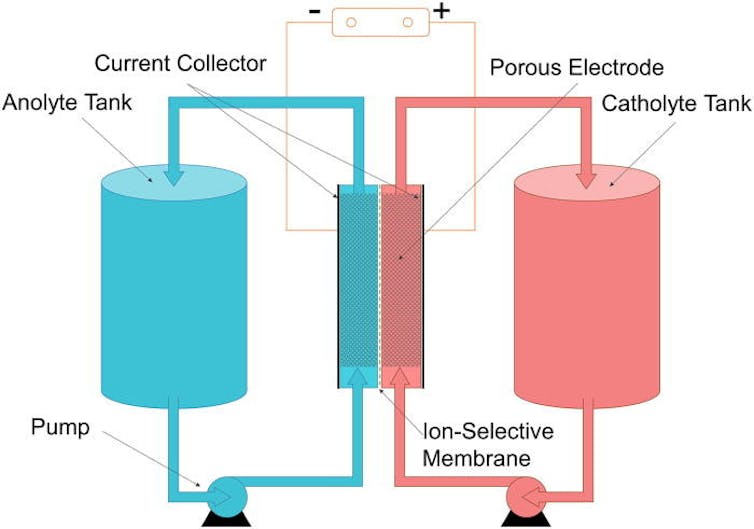

![]()



